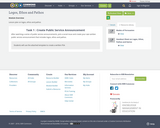
Lesson plan on logos, ethos and pathos
- Subject:
- English Language Arts
- Material Type:
- Module
- Author:
- Ellen Feig
- Date Added:
- 02/24/2017

Lesson plan on logos, ethos and pathos

Using historical texts, information texts, and historical fiction, this module explores the migration experiences in America. It is designed to be flexible. It can be combined with information on Critical Race Theory from Is Everyone Really Equal? An Introduction to Key Concepts in Social Justice Education by Sensoy and DiAngelo for the upper grades or for “Critical Texts in Literacy: Living Inquiries into Racial Justice and Immigration” by Riley and Crawford-Garrett (NCTE) for the middle school grades. The teacher can choose any or all of the text sets. There are a number of possibilities for optional literature circles with suggested full-length texts. Each text set includes pre-reading, during reading, and post-reading strategies.

Are mummies pieces of history, or the sacred remains of human ancestors?

Natural High is a non-profit organization that focuses on the power of storytelling to transform lives. They engage storytellers who kids admire and trust and work with these influencers to create free and impactful content for educators and parents.The activities are designed to develop student understanding about the consequences of drug and alcohol abuse and also to support students in learning and practicing strategies to make healthy decisions. The evidence-based program is used in all 50 states and makes use of current scientific findings on youth behavior, brain development, social norming, and substance abuse prevention.This resource highlights activities in the Understanding the Consequences of Drugs and Alcohol area of focus. Visit the Natural High website at https://www.naturalhigh.org/ for additional materials.
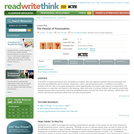
Using published writers' texts and students' own writing, this unit explores emotions that are associated with the artful and deliberate use of commas, semicolons, colons, and exclamation points (end-stop marks of punctuation).
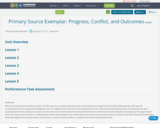
This unit is centered around an anchor text that may be common among content area teachers in a high school setting. Although this unit may be incorporated into any high-school English class, it is aligned with Common Core standards for 9-10. This unit will primarily focus on informational and argumentative texts, and can be used to incorporate more informational texts (as directed by the Common Core) into English classrooms at the high school level. This unit is best suited to a collaborative model of development in which ELA and content area teachers share an anchor text (The Universal Declaration of Human Rights) and communicate about how to connect diverse skills to common texts and essential questions.
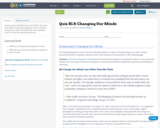
A short quiz on CCSS.ELA-Literacy.9-10.RI.8. The text is from Eliezer Yudkowsky's blog post, "How to Actually Change Your Mind". The Dale-Chall text complexity level is 7-8, and the Flesch-Kincaid is 8.6.
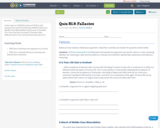
A short quiz on CCSS.ELA-Literacy.9-10.RI.8, with excerpts from articles by Brendan O'Neill ("A March of Middle-Class Miserabilists") and Francis A. Schaeffer ("It is Your Life that is Involved"). The Dale-Chall difficulty level is 11-12, and the Flesch-Kincaid is 13.1.
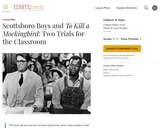
This lesson is designed to apply Common Core State Standards and facilitate a comparison of informational texts and primary source material from the Scottsboro Boys trials of the 1931 and 1933, and the fictional trial in Harper Lee's novel, To Kill A Mockingbird (1960).